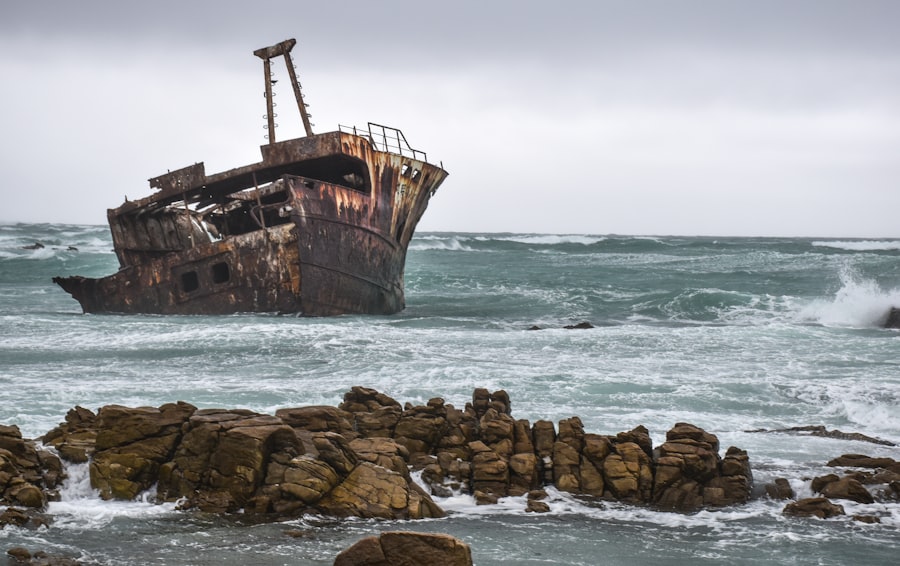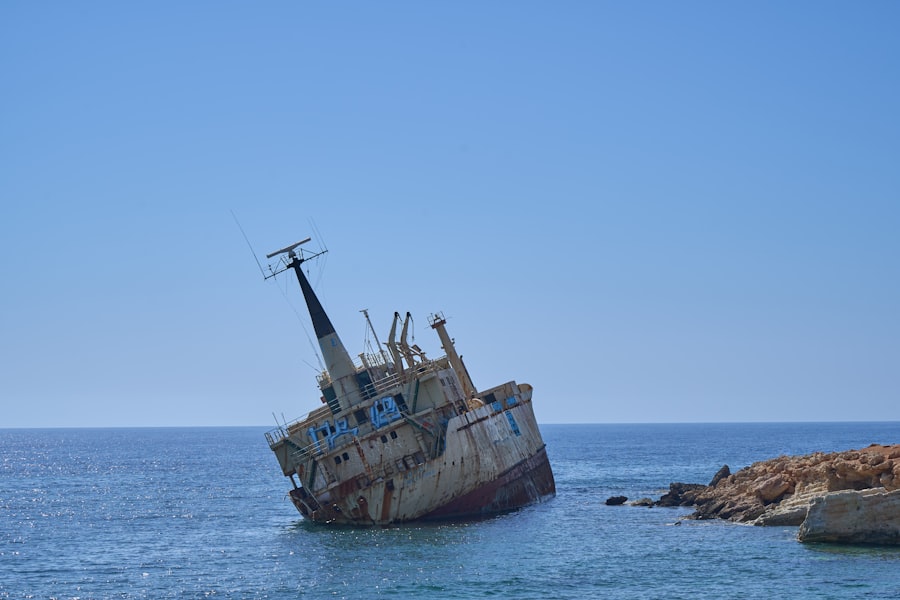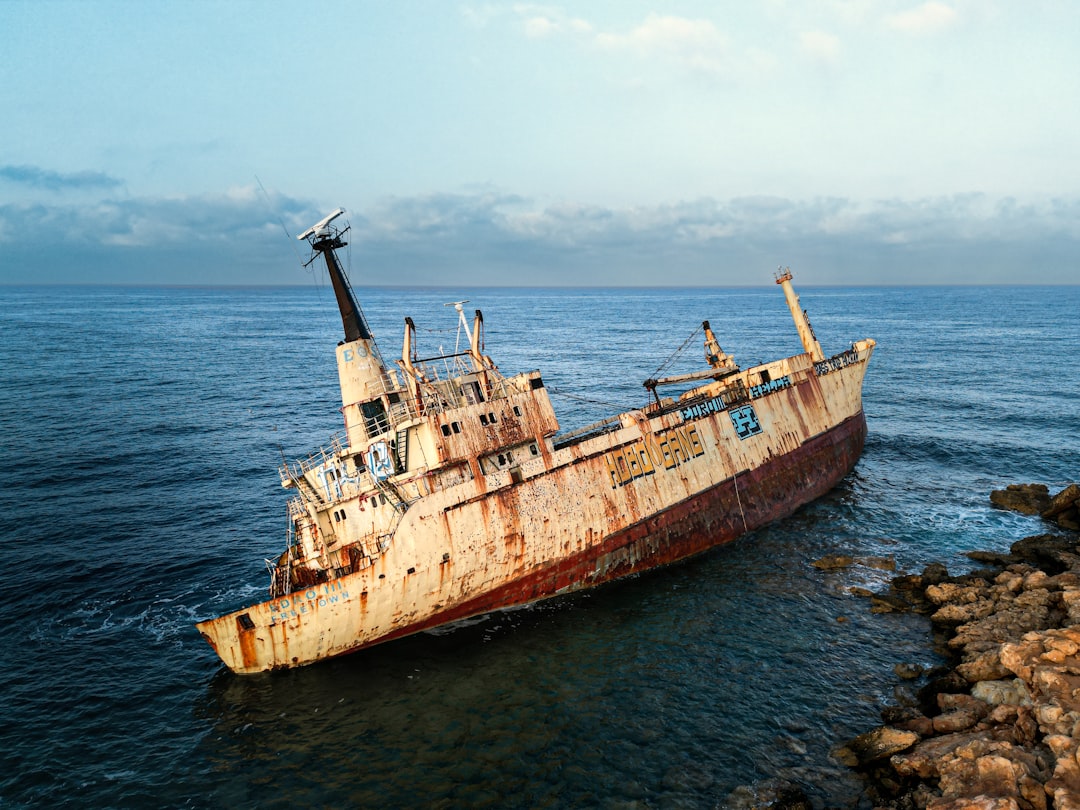The Drake Passage, a body of water located between the southern tip of South America and Antarctica, is renowned for its tumultuous seas and unpredictable weather. This narrow stretch of ocean, measuring approximately 800 kilometers (500 miles) across, is often regarded as one of the most challenging maritime routes in the world. Named after the English explorer Sir Francis Drake, who navigated these waters in the late 16th century, the passage has long been a point of fascination for adventurers and seafarers alike.
Its reputation for fierce storms and high waves has made it a subject of both awe and trepidation. The passage serves as a critical conduit for vessels traveling to and from Antarctica, drawing cruise ships eager to offer passengers a glimpse of the pristine landscapes and unique wildlife of the southern continent. However, the unpredictable nature of the Drake Passage poses significant risks, making it essential for travelers to understand the potential dangers associated with cruising in this region.
As more people seek adventure in remote locations, the allure of the Drake Passage continues to grow, despite its inherent challenges.
Key Takeaways
- The Drake Passage is a treacherous stretch of water between South America and Antarctica known for its unpredictable and violent weather conditions.
- The cruise ship was carrying a mix of adventurous travelers and seasoned sailors, eager to experience the unique beauty of the Antarctic region.
- The tragic sinking of the cruise ship resulted in a frantic search and rescue operation, with many passengers and crew members unaccounted for.
- Survivors recounted harrowing tales of survival, including the struggle to stay afloat in freezing waters and the loss of loved ones.
- The investigation into the sinking focused on potential causes such as extreme weather, human error, and the seaworthiness of the ship, prompting a response from authorities and the cruise industry to address safety concerns.
The Cruise Ship and Its Passengers
On a fateful day, a cruise ship set sail from Ushuaia, Argentina, embarking on what was meant to be an unforgettable journey through the breathtaking landscapes of Antarctica. The vessel, equipped with modern amenities and a crew trained to navigate the treacherous waters, was filled with eager passengers from various corners of the globe. Each individual had their own reasons for joining this expedition—some sought adventure, while others yearned for a connection with nature or a chance to witness the majestic icebergs and wildlife that inhabit the region.
As the ship ventured into the Drake Passage, excitement filled the air. Passengers gathered on deck, cameras in hand, ready to capture the stunning vistas that unfolded before them. The ship’s crew provided safety briefings and shared stories about the history and ecology of the area, enhancing the experience for those on board.
However, beneath the surface of this idyllic scene lay an undercurrent of uncertainty; seasoned sailors knew all too well that the Drake Passage could quickly transform from serene to perilous.
The Tragic Sinking

Tragedy struck when an unexpected storm swept through the Drake Passage, catching the cruise ship off guard. The once-calm waters turned violent as towering waves crashed against the hull, and fierce winds howled through the air. Despite the crew’s best efforts to maintain control, the ship began to take on water, leading to a catastrophic situation that would change lives forever.
In a matter of hours, what had begun as an adventure morphed into a desperate struggle for survival. As panic ensued among passengers and crew alike, emergency protocols were activated. Lifeboats were deployed in a frantic attempt to evacuate those on board.
The chaos was palpable as individuals scrambled to find safety amidst the rising tide. Tragically, not everyone made it out; some were lost to the depths of the frigid waters, while others faced harrowing challenges as they fought against nature’s fury. The sinking of the cruise ship in the Drake Passage would soon become a somber chapter in maritime history.
Search and Rescue Efforts
| Location | Number of Rescues | Duration |
|---|---|---|
| Mountain Range A | 15 | 2 days |
| Coastal Area B | 8 | 1 day |
| Desert Region C | 10 | 3 days |
In the aftermath of the sinking, search and rescue operations were launched almost immediately. Local authorities coordinated with international agencies to mobilize resources and personnel in hopes of locating survivors. Helicopters soared overhead while ships scoured the turbulent waters for any signs of life.
The urgency of the situation was palpable as families anxiously awaited news about their loved ones. Rescue teams faced numerous challenges during their efforts. The harsh weather conditions in the Drake Passage complicated operations, with high winds and rough seas hampering visibility and navigation.
Despite these obstacles, dedicated rescuers worked tirelessly around the clock, driven by a sense of duty and compassion for those affected by the tragedy. As days passed without significant breakthroughs, hope began to wane, but search efforts continued in honor of those who had perished and those still missing.
Survivors’ Accounts
As survivors emerged from their harrowing experiences, their accounts painted a vivid picture of the chaos that unfolded during the sinking. Many recounted moments of sheer terror as they struggled to comprehend what was happening around them. Some described how they clung to life rafts or debris while battling freezing temperatures and turbulent waters.
Their stories revealed not only their physical struggles but also their emotional turmoil as they grappled with loss and uncertainty. Among the survivors were individuals who had formed bonds during their journey—friends who had shared laughter and excitement now found themselves united by tragedy. Their narratives highlighted acts of bravery and selflessness as passengers helped one another in their fight for survival.
These accounts served as poignant reminders of human resilience in the face of unimaginable adversity, showcasing how even in dire circumstances, compassion can shine through.
Investigation and Potential Causes

In the wake of such a devastating incident, an investigation was launched to determine the causes behind the sinking. Maritime experts and investigators meticulously examined various factors that may have contributed to the tragedy. They scrutinized weather reports leading up to the storm, assessed the ship’s structural integrity, and reviewed crew training protocols to identify any lapses in safety measures.
Preliminary findings suggested that a combination of factors may have played a role in the disaster. The sudden onset of severe weather caught many off guard, raising questions about whether adequate precautions had been taken prior to departure. Additionally, concerns arose regarding the ship’s design and its ability to withstand extreme conditions typical of the Drake Passage.
The Response from Authorities
Authorities responded swiftly to address both immediate concerns and long-term implications following the sinking. Maritime safety organizations convened emergency meetings to discuss regulatory changes aimed at enhancing safety standards for cruise ships operating in challenging environments like the Drake Passage. These discussions included proposals for stricter weather monitoring protocols and improved training requirements for crew members.
Furthermore, local governments expressed their commitment to supporting affected families during this difficult time. Counseling services were made available to help individuals cope with grief and trauma resulting from the tragedy. Authorities recognized that rebuilding trust in maritime travel would require transparency and accountability as they worked diligently to ensure that lessons learned from this incident would lead to meaningful changes within the industry.
Reactions from the Cruise Industry
The cruise industry reacted with shock and sorrow following news of the sinking. Industry leaders expressed their condolences to victims’ families while emphasizing their commitment to passenger safety. Many cruise lines initiated reviews of their own safety protocols in light of this tragedy, recognizing that public confidence in cruising could be significantly impacted.
In addition to internal assessments, some companies began collaborating with maritime safety organizations to develop new guidelines aimed at preventing similar incidents in the future. This collective response underscored an industry-wide acknowledgment that safety must remain paramount as more travelers seek adventure on high seas.
The Aftermath for Families and Loved Ones
For families and loved ones left behind after the tragedy, grief became an overwhelming reality that would shape their lives moving forward. Many struggled with unanswered questions about what had happened during those fateful hours at sea. Support networks emerged within communities as individuals came together to share their experiences and provide comfort to one another.
Memorial services were held in honor of those lost at sea, allowing families an opportunity to pay tribute while finding solace among others who shared their pain. As time passed, some families sought legal recourse against cruise lines involved in order to hold them accountable for perceived negligence or lapses in safety measures. This pursuit of justice became intertwined with their healing process as they navigated both grief and anger over what had transpired.
Lessons Learned and Safety Measures
The sinking served as a stark reminder of the importance of safety measures within maritime travel—particularly in regions known for unpredictable weather patterns like the Drake Passage. In response to this tragedy, industry stakeholders began implementing new protocols aimed at enhancing passenger safety during voyages through challenging waters. These measures included improved weather forecasting systems onboard ships, mandatory safety drills for passengers prior to departure, and enhanced training programs for crew members focused on emergency response procedures specific to extreme conditions.
By prioritizing these initiatives, authorities hoped not only to prevent future tragedies but also restore public confidence in cruising as a safe mode of travel.
The Future of Cruising in the Drake Passage
As discussions surrounding safety measures continue within both regulatory bodies and cruise lines alike, questions linger about what lies ahead for cruising in the Drake Passage. While many travelers remain eager to explore this breathtaking region, there is an undeniable need for heightened awareness regarding potential risks associated with such journeys. The future may see a shift towards smaller vessels designed specifically for navigating challenging waters or increased emphasis on expedition-style cruises that prioritize safety alongside adventure experiences.
Ultimately, balancing exploration with responsibility will be crucial as both industry leaders and travelers navigate this evolving landscape together—ensuring that memories created at sea are filled with joy rather than sorrow. In conclusion, while tragedy struck within these storied waters, it also sparked conversations about safety standards that could shape maritime travel for years to come—reminding all who venture forth into nature’s wonders that respect for its power is paramount above all else.
In a recent incident that has captured global attention, a cruise ship navigating the treacherous waters of the Drake Passage tragically sank, raising concerns about maritime safety in this notoriously challenging region. For those interested in exploring the geographical and environmental aspects of such perilous journeys, an insightful article on the topic can be found on MyGeoQuest. This resource delves into the unique challenges faced by vessels in the Drake Passage and offers a broader understanding of the area’s significance. To learn more, you can read the related article by visiting MyGeoQuest’s sample page.
WATCH NOW! Drake Passage: Earth’s Deadliest Waters Revealed
FAQs
What is the Drake Passage?
The Drake Passage is the body of water between the southern tip of South America and the northern tip of the Antarctic Peninsula. It is known for its rough seas and challenging sailing conditions.
What happened to the cruise ship in the Drake Passage?
There are no reports of a cruise ship sinking in the Drake Passage. It is important to verify the authenticity of such claims with reliable sources before believing them.
Are cruise ships safe in the Drake Passage?
Cruise ships that traverse the Drake Passage are designed to withstand the rough seas and challenging conditions of the area. However, passengers should always follow safety instructions and guidelines provided by the cruise line.
What should passengers expect when cruising through the Drake Passage?
Passengers can expect rough seas and potentially stormy weather when cruising through the Drake Passage. It is advisable to be prepared for motion sickness and to follow any safety instructions provided by the cruise line.
What are the attractions of cruising through the Drake Passage?
Cruising through the Drake Passage offers the opportunity to see diverse marine wildlife, including whales, seals, and seabirds. It also provides access to the Antarctic Peninsula and its stunning landscapes.
